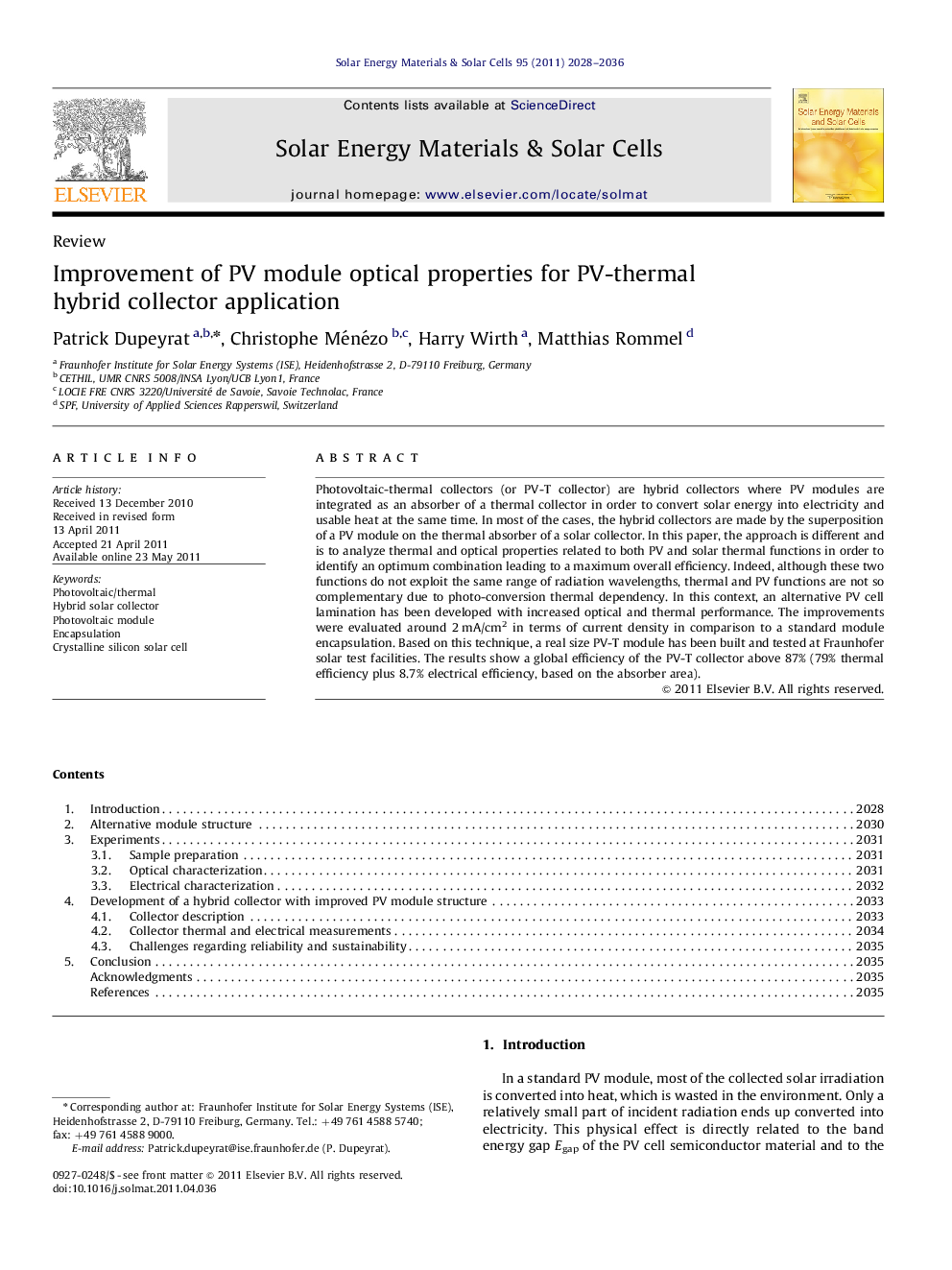| Article ID | Journal | Published Year | Pages | File Type |
|---|---|---|---|---|
| 78747 | Solar Energy Materials and Solar Cells | 2011 | 9 Pages |
Photovoltaic-thermal collectors (or PV-T collector) are hybrid collectors where PV modules are integrated as an absorber of a thermal collector in order to convert solar energy into electricity and usable heat at the same time. In most of the cases, the hybrid collectors are made by the superposition of a PV module on the thermal absorber of a solar collector. In this paper, the approach is different and is to analyze thermal and optical properties related to both PV and solar thermal functions in order to identify an optimum combination leading to a maximum overall efficiency. Indeed, although these two functions do not exploit the same range of radiation wavelengths, thermal and PV functions are not so complementary due to photo-conversion thermal dependency. In this context, an alternative PV cell lamination has been developed with increased optical and thermal performance. The improvements were evaluated around 2 mA/cm2 in terms of current density in comparison to a standard module encapsulation. Based on this technique, a real size PV-T module has been built and tested at Fraunhofer solar test facilities. The results show a global efficiency of the PV-T collector above 87% (79% thermal efficiency plus 8.7% electrical efficiency, based on the absorber area).
Graphical abstractFigure optionsDownload full-size imageDownload as PowerPoint slideHighlights► PV-T collectors convert solar energy into heat and electricity. ► We developed an adapted solar cell encapsulation technique for PV-T. ► We measured 2 mA/cm2 increase in current density in comparison to a conventional PV module encapsulation. ► We built a PV-T collector based on this improved technique and we tested it. ► The results show a global conversion efficiency of the PV-T collector above 87%.
